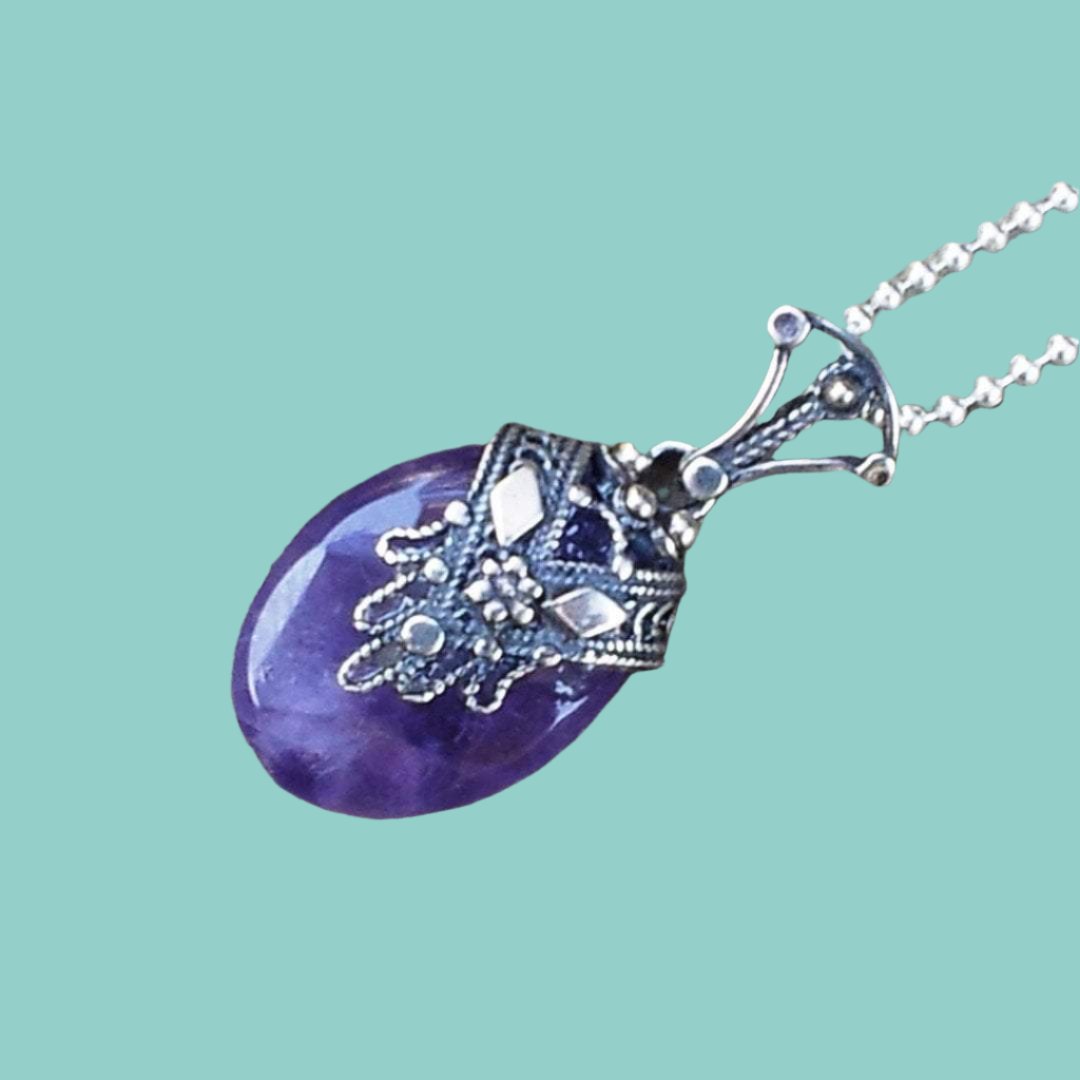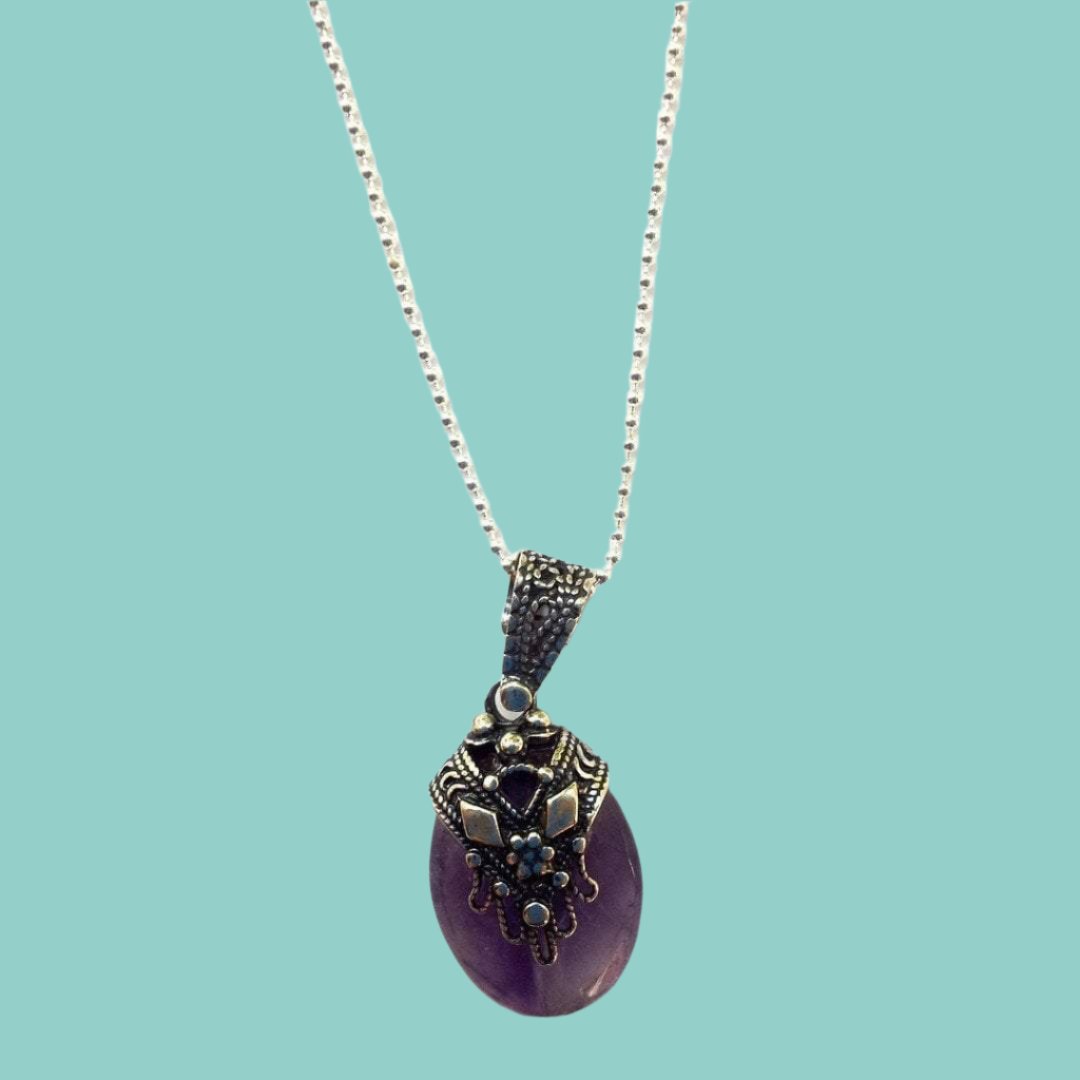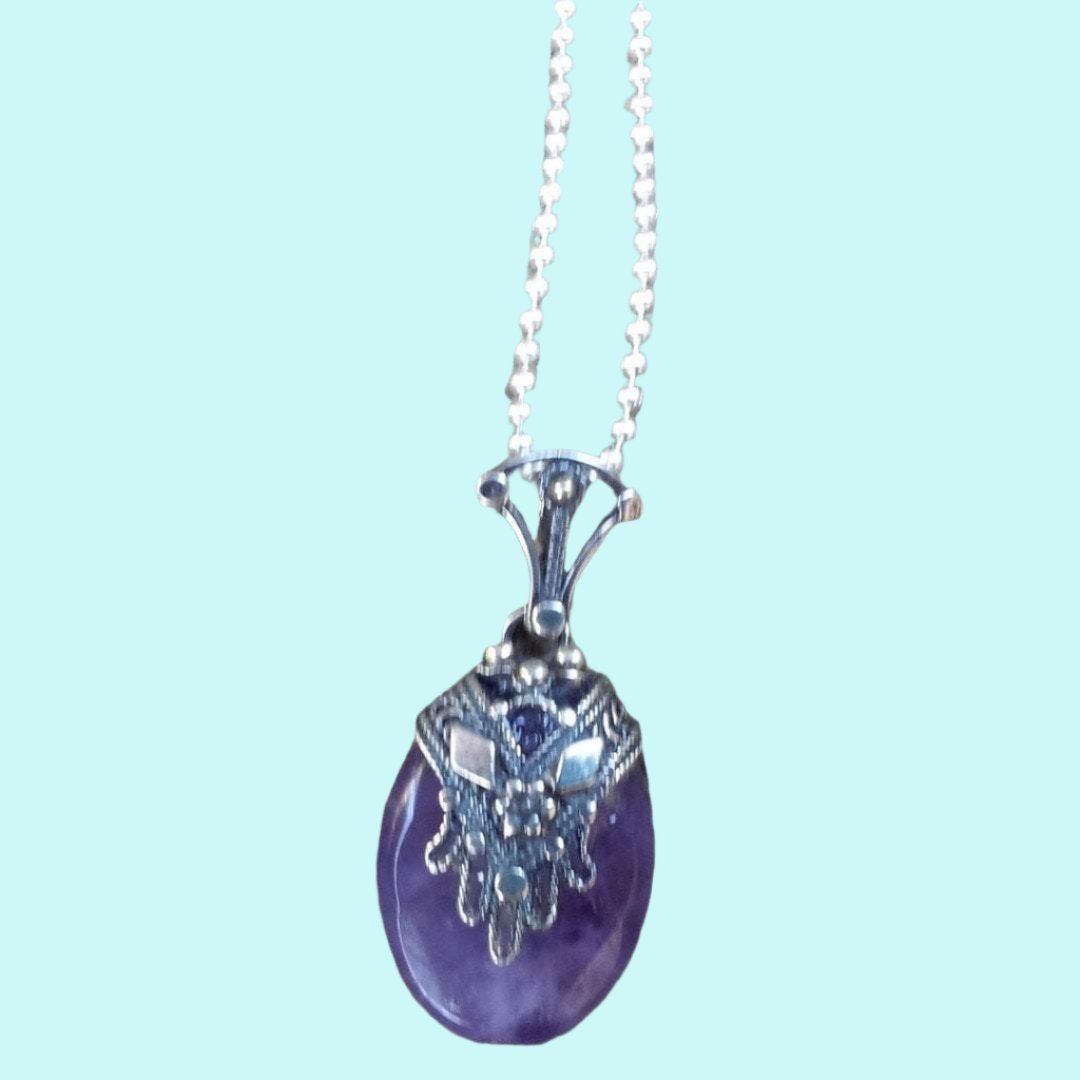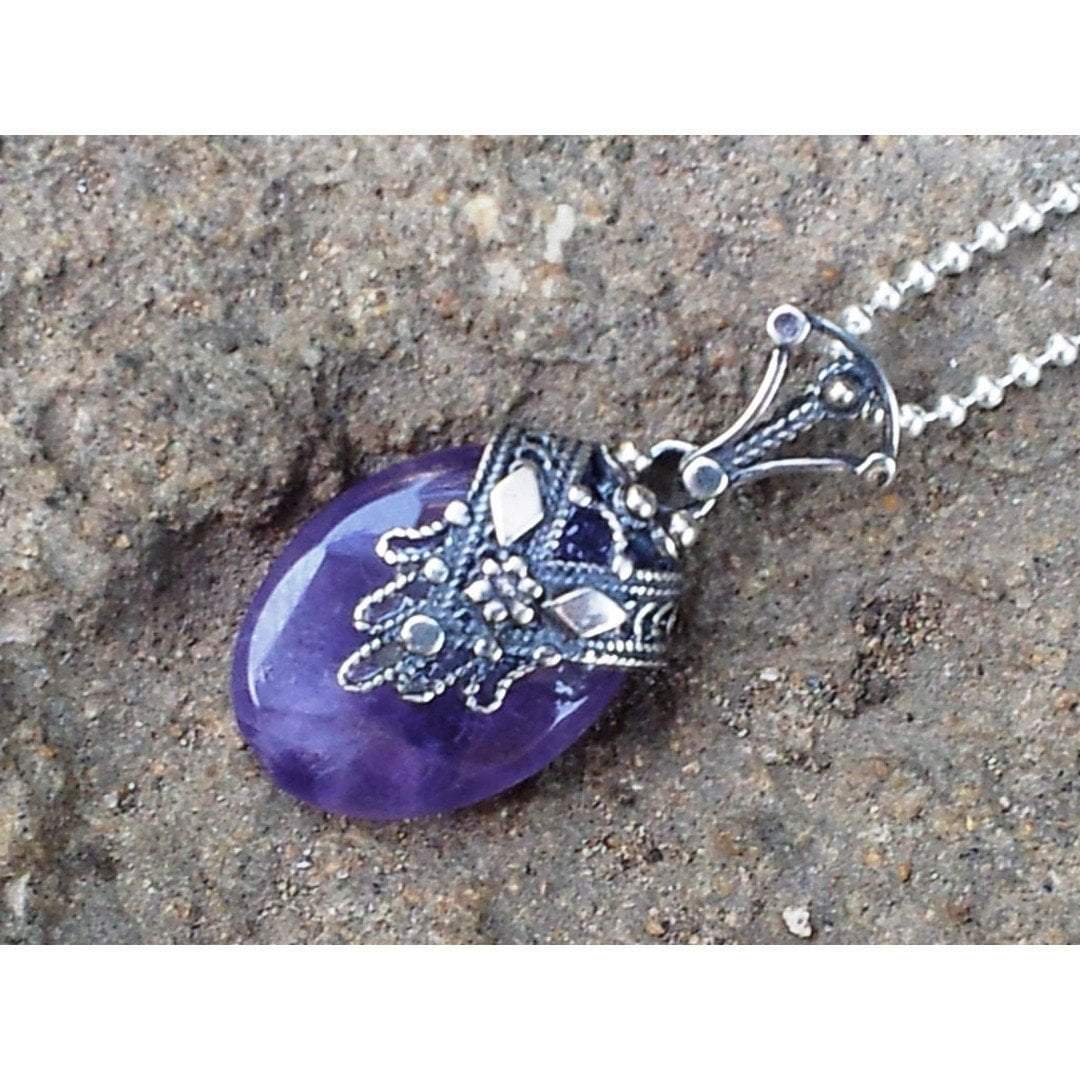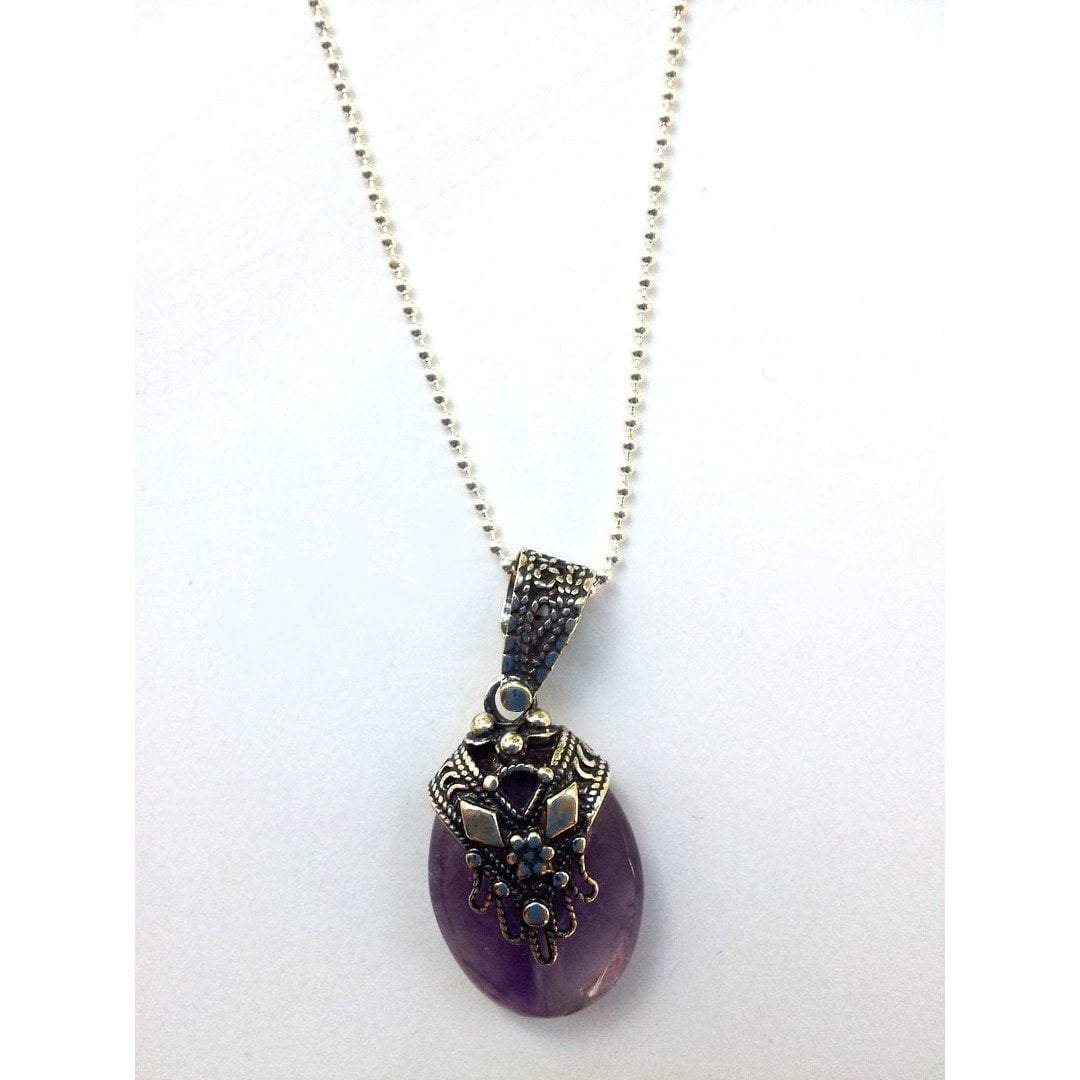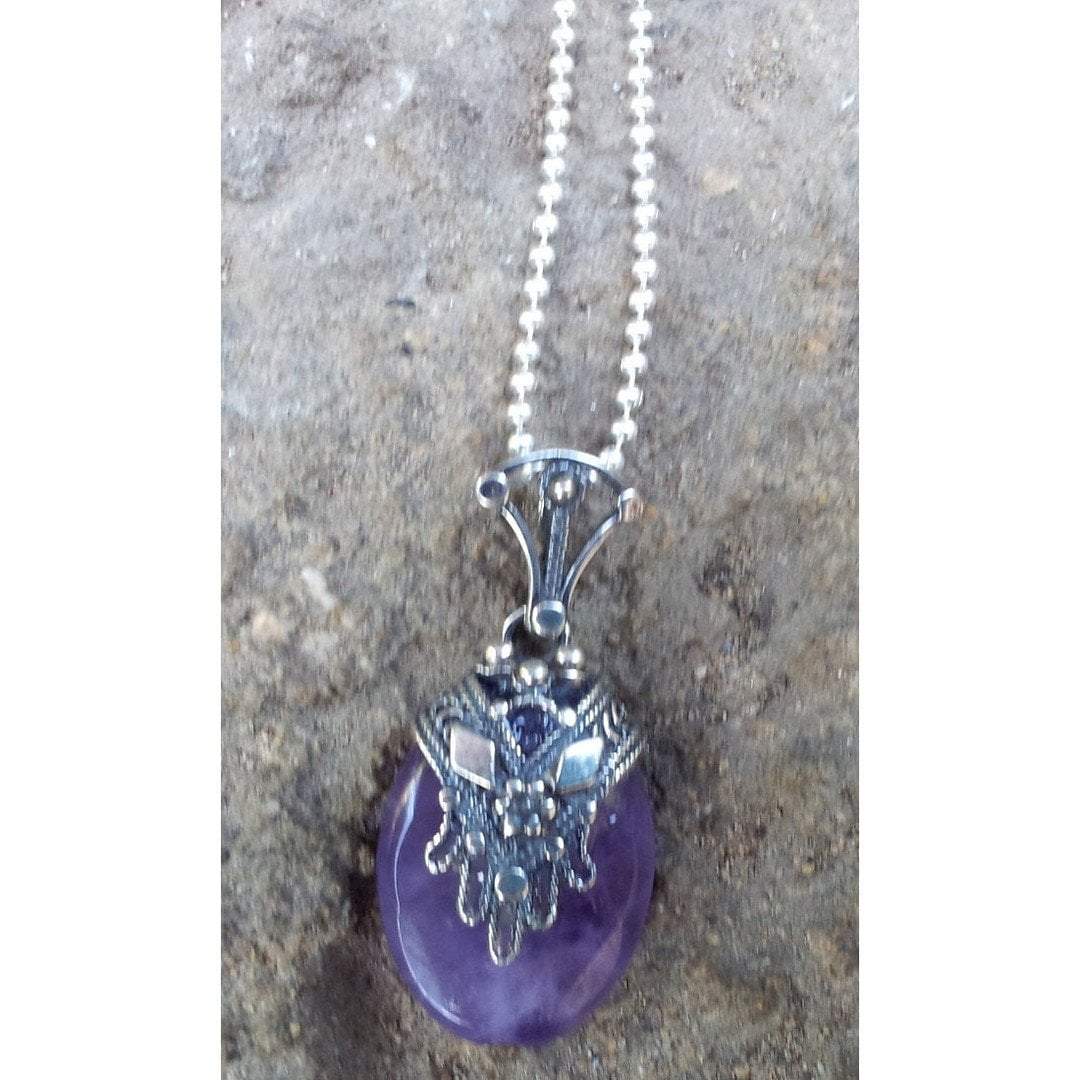Sterling Silver Necklace for Woman, Amethyst pendant filigree hamsa
Couldn't load pickup availability
Sterling Silver Necklace , Amethyst pendant filigree hamsa
Amethyst stone about 2 cm x 1.2 cm
Length 69 cm
The art of the Yemenite silversmiths has a long history. It usualy runs in family's veins for generations - from father to son.
Filigree (formerly written filigrann or filigrene) is a delicate kind of jewellery metalwork made with twisted threads usually of gold and silver or stitching of the same curving motifs. It often suggests lace, and in recent centuries remains popular in Indian and other Asian metalwork, and French from 1660 to the late 19th century. It should not be confused with ajoure jewellery work; while both have many open areas, filigree involves threads being soldered together to form an object and ajoure involves holes being punched, drilled, or cut through an existing piece of metal.
Hamsa
The hamsa is a Middle Eastern symbol dating back to prehistoric times designed to give protection from the evil eye, bad luck that results from the attention or jealousy of others. It is also known as the Hand of Fatima ot the hand.
Today it is used both by Jewish and Muslim culture. The hamsa consists of a hand, usually pointing fingers down with an eye in the middle.
Most commonly, the Hamsa is made in the shape of a hand with five fingers outstretched. There is, however, the unique Cohanim Hamsa. In this position, the forefinger and third finger are joined from one side, and the ring finger and the little finger are joined from the other side. This forms the Hebrew letter "shin" and is the position of a Cohen's fingers when he blesses the congregation.
Share
